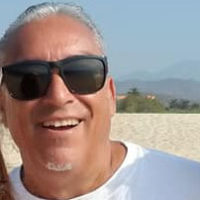
HO CHI MINH CITY — All the children in the special ward at Tu Du Hospital call her grandmother. She is a petite, 80 year old former hospital administrator who now works with children at the hospital–all of whom are victims of Agent Orange. Her distinct grey hair and glowing smile brings comfort to those children who are patients in the Tu Du Hospital Peace Village.
The children living in the Peace Village, at least those children who can, come running to hug her. They all call her Grandmother although her formal name is Ms.Thay. Many children in this special ward have physical and mental disabilities. Still, “Grandmother” has a special bond with all the children in the Peace Village. Tu Du Hospital is the only hospital and the first in Vietnam’s 32 provinces to have a Peace Village located in a hospital.
Since its establishment in 1966, Tu Du Hospital has received and raised 500 children who live with the results of birth defects and other injuries from chemical warfare in Vietnam.
The Peace Village
The Peace Village dioxin ward is designed for the sole purpose of providing specified medical services. The hospital performs various medical functions, vocational education for disabled children and children born with deformities-victims of the dioxin known as Agent Orange. The U.S. military used Agent Orange and other herbicides during the Vietnam war.
Dr. Phuong, Chief of Rehabilitation at Tu Du, is well aware of the challenges they face. “It is estimated that over 3 million people in Vietnam suffer from the affects of Agent Orange,” he said. “It is passed from one generation to the next.” The doctor went on: “Three generations, and now moving into the fourth, have had lasting affects of Agent Orange. It will take decades of ingenuity and a lot of money but we are always hopeful.”
While touring the Peace Village with Dr. Phuong, I met Anh Duc. He was born a conjoined twin. It took several dozen highly trained doctors to successfully separate the twins, but Duc’s brother Viet eventually died. Today Anh Duc is 34 years old, happily married with healthy young twins. He works with the children in the Peace Village.
Many children in the Peace Village suffer with severe disabilities. On the tour of the Peace Village I saw several children with severe disabilities, and I was provided with background information on a few of them. One child had an enlarged head and was bed ridden. Another child had no eyes. Still another child was missing both arms and legs. I saw children with both physical and mental disabilities. Currently Tu Du Hospital has more than 60 children being cared for in the Peace Village.
Dr. Phuong said “at least ten of the children with disabilities raised at the hospital have overcome shortcomings to integrate into the community, such as Nguyen Duc who is a staff member at Tu Du Hospital, and Nguyen Xuan Nghia who is a student of the University of Economics here in Ho Chi Minh City.”
Nguyen Xuag, a staff member with the Commission for External Relations and a translator as well as I were both emotionally affected.
Yet the children are clearly loved; their world isn’t all suffering. There was another child who came up to me wanting a hug and a kiss. Another child, wanting to show off his English, sang the song “Now I know my ABC’s”.
Modern but overcrowded
According to Dr. Le Quang Thanh, Director of Tu Du Hospital, the hospital currently has the bed capacity to hold 1,260 people. Yet hospital staff serve between 1,600 and 2,000 patients per day. The issue of overloading is a real concern for the hospital. Resources are limited given the demand for medical care, and overloading only heightens this problem.
The hospital would like to upgrade its equipment with the latest technology as well as to continue hospital building construction. These are expensive budget items but it remains their vision to upgrade and according to Director Thanh, they are moving in this direction.
The Director said that Tu Du Hospital is a leading center in Vietnam for obstetrics and gynecology. It has a staff of 2,175; 84.7 percent are female. Sixteen percent of the staff are doctors and 58.8 percent are midwives or technicians.
The work that staff does day in and day out is challenging. Their dedication and commitment are impressive. Their professional skills are high and they do the best with what they have. Tu Du Hospital is a modern metropolitan hospital.
In the future it is the hope of the hospital staff to have more international cooperation and conferences. There have been several medical exchanges with France and Australia, Singapore, and Japan. To date, there has not been an American exchange with American medical professionals. This is something the hospital medical staff desires.
Photo: Hospital staff. | Courtesy of David Trujillo/PW









